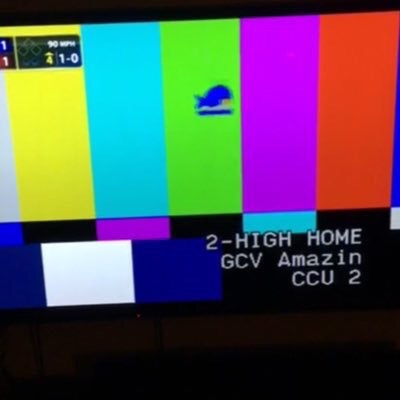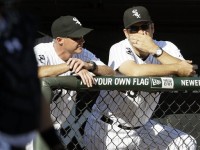Noah Syndergaard

So far this season, two of the positive story lines, even when the team was really struggling was David Wright playing like the David Wright of old, and the continued development of Noah Syndergaard. Both were on display tonight.
Just like when Wright first came off the DL last year, he homered tonight in his first at bat in Citizen’s Bank Ballpark:
#DavidWright delivered an oppo ? in the first inning. #Metshttps://t.co/HIgn4DcI9E
— New York Mets (@Mets) April 18, 2016
He also made a nice bare-handed play in the field:
A little variation on vintage David Wright: https://t.co/Y2uGh85KEZhttps://t.co/Nx1yXyAIdS
— MLB (@MLB) April 19, 2016
The Mets needed Wright because once again runs were hard to come by against a Phillies starter. The Phillies young starters are very underrated. Tonight, it was Jerad Eickhoff. Once again, he showed a filthy 12-6 curveball. He would pitch seven innings allowing five hits, two earned, three walks, and nine strikeouts. He lowered his ERA to 1.89.
In the sixth, the Mets broke a 1-1 tie with a two out rally. Yoenis Cespedes would hit a triple, and he would score on a Lucas Duda RBI single. With Duda is struggling this year, he is hitting 4-10 with RISP. It was not the last time we would hear from Duda. For his part, Cespedes showed no ill effects from the bruised leg in the field on the basepaths.
The real mystery from tonight was how in the world the Phillies scored the one run. Syndergaard was throwing fastballs that appeared to be 101.9 MPH. His fastball was hovering around 100 MPH all night. His slider was hovering around 95 MPH all night. His change was around 90, and his curveball, or Thor’s hammer, was around 85 MPH. His stuff was once again practically unhittable.
Overall, Syndergaard pitched seven innings allowing five hits, one earned, two walks, and eight strikeouts. This actually raised his ERA to 0.90.
Once Eickhoff left the game, the Mets began to tee off against a terrible Phillies bullpen. In the eighth, Duda hit a laser to right field for his first homerun of the season.
Neil Walker would go back-to-back with an opposite field homerun to left. It was his fourth of the year. In the ninth, Wright would hit his second homerun of the game. Both were opposite field shots. They turned a tight 2-1 pitcher’s duel into a comfortable 5-1 win.
Antonio Bastardo pitched a scoreless eighth. Jeurys Familia came into a non-save situation. On the one hand, it could’ve been your typical closer struggling in a non-save situation. It also could’ve part of what has been, at least for him, a tough start to the season. Familia let up a single and double before settling down. He got the next three out, but not before allowing a run to score on a fielder’s choice. Fortunately, Familia finally shut the door before allowing a run preserving the 5-2 win.
The Mets are back to .500, and with a soft part of their schedule this week, the Mets look to be ready to take off.
Game Notes: The Mets hitters continue to strike out a lot. Tonight, they struck out 11 times. Mets have hit 23 homeruns in their last 11 games at Citizen’s Bank. Travis d’Arnaud missed the game with the bruised elbow. In the eighth, Juan Lagares was double switched into the game forcing Michael Conforto to the bench. The Mets allowed three stolen bases including two when Syndergaard was on the mound. It’s the one thing he doesn’t do well. In the fourth, when Duda popped out, a whale appeared on the screen:
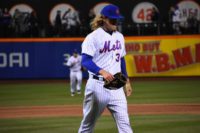
Tonight’s start by Noah Syndergaard was good. Why do I describe it as good? Because no matter what adjective you would pick to describe his start would be grossly underselling it, so you might as well just go with good. Too bad the Mets offense can’t even be described as putrid. Otherwise, Syndergaard and the Mets might’ve gotten the win tonight.
Syndergaard just dominated the Marlins like he did the Royals – like he’s going to do to the rest of baseball this year. Syndergaard went seven innings allowing seven hits, one earned, one walk, and 12 strikeouts. His ERA actually increased to 0.69.
However, as good as Syndergaard was, he still needed some help. Derek Dietrich would start the inning with a leadoff double, and he would wind up running the Marlins out of the inning. After a ground out and line out, Ichiro Suzuki singled to short, and Dietrich did a poor Eric Hosmer impersonation. Lucas Duda nailed him easily at the plate. Even if Ichiro would’ve been ruled out on replay, it was good to see Duda get some measure of redemption.
However, despite Syndergaard’s domination, the Mets still lost. They lost because the Mets still are not hitting or scoring runs.
The only run was scored on a Duda first inning RBI single. After that, it was pretty much nothing. At least tonight, they had the excuse of a dominant Jose Fernandez for five innings. Yoenis Cespedes gave one a ride in the third, but it was knocked down by the 29+ MPH winds blowing in from left field.
The turning point was Dee Gordon‘s eighth inning sixteen pitch at bat against Jim Henderson. Gordon would single to left. Henderson would walk two of the next three to leave the bases loaded. Henderson just lost his control, and he almost hit Giancarlo Stanton in the head. Jerry Blevins came into the game, and Don Mattingly used Martin Prado to pinch hit. Prado would get the game winning sac fly, and the Marlins would win 2-1.
The Mets have now lost four in a row and are 1-4 at home.
Game Notes: Terry Collins allowed Michael Conforto to hit against a lefty with runners on first and second with one out in the sixth. He grounded into an inning ending double play. Cespedes had another good night at the plate going 1-3 with a walk. Collins ignored the fact that Henderson is playing his first full season since shoulder surgery:
Jim Henderson with his career-high 34th pitch. And it's a walk to load the bases with one out. TC to the bullpen.
— Adam Rubin (@AdamRubinMedia) April 13, 2016
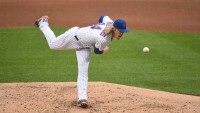
The late, great, Hall of Fame Manager Earl Weaver used to say, “Momentum? Momentum is the next day’s starting pitcher.” With that said, the Mets should have momentum all throughout 2016.
With a 2-4 start, it hasn’t always worked out that way, but tonight Mets fans get to see Noah Syndergaard take the mound. Last time we saw him, he was doing things like this:
GIF: Did we just witness @Noahsyndergaard throw a 95 MPH SLIDER?! pic.twitter.com/v5BGdNGKLp
— Nick Pollack (@PitcherList) April 5, 2016
He’s become unhittable. He makes you want to jump out of your chair and scream:
Fact is, whenever you have Thor on the mound, your team has momentum. They can go out there and beat the ’27 Yankees. They can go out there and beat the Big Red Machine just like Tom Seaver, Jerry Koosman, and Jon Matlack did. When any member of a power triumvirate of Mets pitchers takes the mound, you have to like your chances of winning. You’ve got momentum.
Tonight, momentum, thy name is Thor.
The Mets sent out Steven Matz, who is the proverbial fourth member of what had been touted as the Big Four. Mets fans all hope each of these pitchers will be future Hall of Famers. Tonight, Matz did a pretty good impersonation of Tom Glavine.
Like Glavine, Matz allowed seven runs to the Marlins. At least Matz lasted a little longer. Matz’s final line was 1.2 innings, six hits, seven earned, two walks, and one strikeout. Before the game, Matz was 4-0 with a 2.27 ERA. This year, he’s 0-1 with a 37.80 ERA.
In the fateful second inning, seemingly every Marlin got a hit including Barry Bonds and Don Mattingly got hits. Of course, Giancarlo Stanton provided the exclamation point:
.@Giancarlo818 puts an exclamation point on the 2nd inning!#StantonSmash | #LetsGoFish pic.twitter.com/rTwMWtl5HI
— Miami Marlins (@Marlins) April 12, 2016
It needs to be constantly reiterated, but Bonds seems to be having a very real impact on this Marlins team. Six of their eight regulars are hitting over .300. They had no problem hitting Matz. This is a young Marlins club with a lot of offensive talent. If they realize that potential, it’s a definitive blow to the Mets chances to return to the postseason . . . especially with how this club plays the Marlins.
As for the Mets, their bullpen did a yeoman’s job. Hansel Robles pitched 2.1 innings allowing four hits, one earned, one walk, and three strikeouts. Antonio Bastardo pitched 1.1 innings allowing four hits, two runs, one walk, and two strikeouts. Addison Reed pitched 1.2 innings with no hits, no runs, and four strikeouts. Jeurys Familia was pressed into action even though he has the flu. Jerry Blevins pitched the ninth. The night was such a disaster that Blevins finally allowed a hit in his Mets career. It was an infield single to Dee Gordon with two outs in the ninth.
The Mets might’ve avoided burning through their entire bullpen like that if they would’ve just put Jacob deGrom on the DL. Sean Gilmartin, who was very effective as the long man last year, could’ve soaked up some of those innings. It would’ve been all the more imperative with Logan Verrett going on Wednesday.
Offensively? Well the Mets had seven hits and three runs. All of the runs came after the game was over. Two of those hits were from David Wright, who despite his career being declared over, has been the Mets best offensive player so far this year. He’s hitting .333 with a .478 OBP. Perhaps that’s the reason why the man with the bad back played all nine innings in a 10-3 blowout.
All kidding aside, the Mets decision making in this young season has been perplexing. Terry Collins bats three lefties bunched up together every day (with his splits, Neil Walker is effectively a left handed hitter). Jim Henderson leads the Mets in appearances despite not having pitched in two years and coming off a second shoulder surgery. Remember that next time Collins gets emotional over Johan Santana. At least Collins isn’t to blame for the team’s mismanagement of the deGrom/bullpen situation.
With all that said, this is a game the Mets should just forget about. It’s another game to forget in what has been a mostly forgettable start to the season. Fortunately, momentum is the next day’s starting pitcher, and Noah Syndergaard is scheduled to pitch tomorrow. So, in that sense, the Mets have some momentum going.
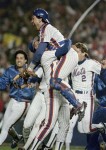
Between 1984 – 1990, the Mets finished in second place or better. Over the course of these seven seasons, the Mets averaged 95 wins. Without question, this was the best stretch in Mets history. It’s strange to think that any point in time your team averages 95 wins over the course of five seasons, you are disappointed. However, as Ron Darling expained to Mike Francesa, he feels “very disappointed” that the Mets didn’t accomplish more.
While Dariling’s feelings are understandable, and many Mets fans would agree with him, there are a number of reasons that we can point to as the reason why the Mets didn’t win more. Rick Sutcliffe went an amazing 16-1 after the Cubs acquired him helping them win the division in 1984. The Mets had to contend with a really good Cardinals team year in and year out. The Mets were snakebit with injuries during the 1987 season. The Mets ran into Orel Hershiser, who had one of the greatest seasons for a pitcher ever in 1988, in the NLCS. However, truth be told Davey Johnson managed a horrific series. In 1989, the team was in transition, and in 1990, the Pittsburgh Pirates were just better and were embarking on their own run. All of these reasons are valid, but the main reason everyone points to would be the drug problems, namely with Dwight Gooden and Darryl Strawberry.
There’s another reason why those Mets teams only got one shot at a World Series – the postseason format. Back in that time frame, the only teams that went to the postseason were the division winners. In today’s game, it would be unheard of a team winning 98 games not only missing the postseason, but also missing the postseason by three games. If you apply, the current postseason rules and divisional formats to the 1980’s, the Mets would have had won the NL East for all seven of those seasons. Its possible that instead of talking about the 1986 World Series, we’re talking about the Mets’ dynasty. It’s possible the Mets would’ve won multiple World Series during that stretch. It’s also possible that like the Braves in the 90’s, the Mets would only win one World Series, and we would be left questioning what happened.
Whatever may be the case, it’s apparent that those Mets teams did not get as many chances to reach the postseason as this current Mets team will. Last year, the Mets won the NL East with 90 wins. From 1984 – 1990, the Mets only won the NL East in the two seasons they won 100 games.
There is no reason for this Mets team to only go to the postseason twice with their current core group of players. Matt Harvey, Jacob deGrom, and Noah Syndergaard are under team control until 2019. Young players like Michael Conforto already contributing, There are big prospects like Dilson Herrera and Amed Rosario who we should see within the next few seasons at Citi Field contributing to what is already a World Series contending team. Without being too unreasonable, I believe this Mets team is set to contend for a longer period of time than Ron Darling’s Mets’ teams. To expect that seems unreasonable, but when you consider the young talent already on the team and in the pipeline, it’s certainly possible.
So before the Mets play their home opener today, they’re going to raise 2015 National League Champions flag. As we saw again that postseason, there is a lot that can happen along the way that can help you advance in each series. If not for Daniel Murphy having a game for the ages, and the Dodgers being unable to hit deGrom despite him having nothing, the Mets lose in the NLDS. The Mets are instead raising at 2015 National League East flag. So no, the 2016 season is not World Series or bust, nor in retrospect is the Mets only winning one World Series from 1984 – 1990 really disappointing.
With that said, I don’t blame Ron Darling for feeling the way he does. I won’t blame the current Mets players from feeling the same way about 2015. There is a World Series championship in the Mets clubhouse. Whether that is in 2016 or later, we do not know yet. Right now, I will say that as long as this Mets group wins one World Series, I won’t be disappointed because I will have been able to see something that has only happened twice in the Mets 54 year history. No matter what happens in 2016, it promises to be a special season, and I can’t wait to watch each and every minute of it.
Lets Go Mets.
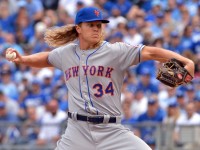
Last season, Noah Syndergaard basically dominated with a fastball/sinker, curveball, and a changeup. He tinkered with a slider, but he only threw it 3.15% of the time. After a full offseason to work on the pitch, Syndergaard announced in a big way that the pitch will be a big part of his repertoire this season.
GIF: Did we just witness @Noahsyndergaard throw a 95 MPH SLIDER?! pic.twitter.com/v5BGdNGKLp
— Nick Pollack (@PitcherList) April 5, 2016
A 95 MPH SLIDER! ARE YOU KIDDING ME!?!?!?!?
You don’t throw 95 MPH sliders with all the cheat codes on when you’re playing a video game. It’s not seemingly impossible. It is impossible. Somehow, someway Syndergaard was able to do it. Syndergaard took that pitch and took it to another level. Everyone noticed it, including Syndergaard himself as Adam Rubin reported:
“I realized in the beginning of the game I had a pretty good feel for it,” Syndergaard said. “I really took it to the next level, because I’ve never thrown a 95 MPH slider before . . . . I kind of shocked myself with how good my slider was. It felt good in spring training, but I amped it up to another level today.”
That’s an understatement. Seven of Syndergaard’s nine strikeouts came with the slider. He only had 11 strikeouts from his slider all last season. None of the Royals could hit the pitch, not even Hall of Famer George Brett – he of 3,154 hits and a career .307 batting average. As reported by Joel Sherman of the New York Post:
“There is no man alive who could’ve hit those three sliders [Syndergaard] threw to Morales,” Yost said. “I don’t think I’ve ever seen a 95-mph slider. George Brett was in here [his office] and I asked him if he could hit that, and he said no way.
After watching Syndergaard last year, we should no longer be surprised that Syndergaard has unmatched and unhittable stuff. And yet, he continues to amaze because he has a strong work ethic and a willingness to be coached. He gets better and better. He even amazed his teammates; the same people who watch him day in and day out. As David Wright said in Adam Rubin’s article:
“He had electric stuff,” captain David Wright said. “I looked up at the scoreboard and saw 94, 95. I go ask [catcher] Travis [d’Arnaud] what those pitches were, and he’s talking about sliders. That’s unheard of. That’s about as good as I’ve seen. Stuff-wise, composure-wise, for a young guy to come into this environment and throw that type of game, he’s got the ability to be a special one.
By the way, for all the talk about his new unhittable slider, Syndergaard still had his original unhittable pitches working:
Syndergaard is averaging 99.7 mph on his sinker. Not approaching. Not maxing out at. Averaging.
— Mike Petriello (@mike_petriello) April 5, 2016
As Joel Sherman reported, Alex Gordon said, “He was throwing me fastballs right down the middle, and I couldn’t catch up.” No one was catching up to the fastball. No one was making contact with the slider. Travis d’Arnaud, an exceptional receiver, even had trouble catching the pitch at times. Syndergaard now has two unhittable pitches.
We all joke that Syndergaard is really Thor, the Norse god of thunder. It’s a moniker Syndergaard fully embraces. With his other worldly stuff, at what point does this seek being a joke and start being accepted as reality?
Editor’s Note: this article was first published on metsmerizedonline.com
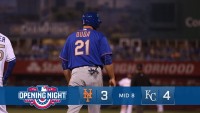
Aside from the fact that Curtis Granderson didn’t hit a homerun, Opening Day sure felt like a repeat of the 2015 World Series. As the late Yogi Berra would say, “It’s déjà vu, all over again.” We had the following:
- Yoenis Cespedes failing to make a routine play in the outfield leading to a run;
- A good Matt Harvey effort getting wasted;
- The Royals taking advantage of a poor Mets defense;
- Michael Conforto being really impressive; and
- The Mets losing.
For all the debating over the course of the offseason regarding Terry Collins leaving in Harvey, we got a taste of what Game 6 would’ve looked like. It wasn’t pretty. It really highlighted what the Royals did well, and the Mets did poorly.
The main difference between these teams is fundies (as Keith Hernandez puts it), defense, and a little bit of luck. Cespedes drops an easy out off the bat of Mike Moustakas, and he later scores on a single past Asdrubal Cabrera, who showed off his limited range at short on the play. Eric Hosmer‘s bunt stays fair while Juan Lagares‘ goes foul. Yes, it would lead to a run. Alex Gordon hits one off the end of the bat falling just out of the reach of Lagares to score a run. It was as frustrating as the World Series.
Since the Mets lost, let’s start with the bad. Mainly, it was David Wright. He couldn’t hit a fastball. He was 0-4 with a walk and two strikeouts. The last strikeout was in the ninth with the tying run on third. He made a couple of plays in the field, but he was able to get absolutely nothing on his throws. While it’s still early, and you don’t want to overreact to anything. However, with Wright’s back, I’m not sure it overreacting.
Also, the home plate umpire wax terrible. He was calling strikes in the area where Noah Syndergaard goes when he’s standing 60′ 6″ away, but over the plate was called a ball. Even worse than that was the ESPN brand new telecast. They delayed the start 40 minutes for an already late 8:00 start. They did inane segments like “The Mendoza Line” and Aaron Boone imitating batting stances. Even better, there were all-in on the Royals. When the Mets got something going in the 8th, they were being Royals-esque.
This is also Opening Day – a time when anything is possible. A time when we are supposed to be full of hope. There were definitely reasons for hope.
Harvey was good. The stat line wasn’t pretty with him allowing four runs (three earned) with eight hits, three walks, and only two strikeouts in 5.2 innings. However, his stuff looked good, and he really wasn’t helped by his fielders.
Conforto was 2-2 with a double and two walks. Last year was a fluke. He’s a much better player than he showed he was last year. Another good sign was the Mets offense that was asleep for almost all of Spring Training, woke up in the 8th and made it a game. The rally was highlighted by a Lucas Duda two run bases-loaded RBI single.
Sadly, the 8th inning rally fell short as the new double play combination make the outs killing the rally. In the ninth, we yet again saw Wade Davis and record the save, stranding the tying run on third, and locking down the 4-3 win. It was as frustrating a loss as you could’ve imagined. However, the Mets can build off of this. There was nothing you can point to tonight that would make you believe the Mets aren’t World Series contenders.
It’s time to dust themselves off. Continue to work on things during their off day, and go to the next ace in the fold in Game 2.
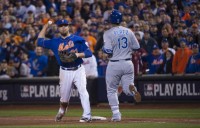
Ask a Mets fan which team is going to represent the National League in the World Series, and you know what their answer will be. In a clubhouse full of confident guys like Matt Harvey, you know to a man the Mets believe they are returning to the World Series.
You know who agrees that the Mets will return to the World Series? Eric Hosmer. As Hosmer told Ebenezer Samuel of the New York Daily News:
You can definitely see the Mets being that team to get back on that stage and win on that stage. Not only did they get experience (from the World Series), but they’ve got guys who have established themselves as superstars in the game. I think the future is bright for those fans in New York.
Of course when talking about the reasons why the Mets can return to the World Series, Hosmer invokes the pitching staff, especially Harvey, Jacob deGrom, and Noah Syndergaard. As Hosmer notes, “. . . the hardest thing is to be able to have the quality starting pitching and not only have the quality but to have the depth as well. They have it, and they will be more comfortable in the playoffs.”
What was surprising was in addition to the Mets starting pitching, Hosmer named Lucas Duda as a reason why the Mets could repeat as National League pennant winners. He didn’t name Yoenis Cespedes who electrified the Mets when he joined them after the trade deadline. He didn’t name Michael Conforto, who hit two home runs in a World Series game and who refused to make the last out of the World Series. He didn’t even name Curtis Granderson who hit three home runs in the World Series. He named Lucas Duda whose poor throw home in Game 5 allowed Hosmer to score the game tying run. Why him? Well according to Hosmer, we shouldn’t judge Duda based upon one throw:
The fact that it happened in the ninth inning magnified the situation more, but if you look at what Duda did, he was the one who got multiple RBI hits for them (that game) and got things going. I think that play, it’s a small sample size of what actually happened for him in the World Series.
Hosmer is right, and he should’ve taken it a step further. Duda has been terrific for two plus seasons now, and yet, there will always be a segment of the fan base that will judge him solely for that one throw.
In Duda’s first two full seasons as the Mets first baseman, he has hit .249/.350/.483 with 57 homers and 165 RBI. His OPS+ is 134, and he has a cumulative 6.6 WAR. In the NL East clincher, he hit the grand slam keynote address. He hit another grand slam in the fourth and deciding game of the NLCS. Overall, Duda is as good a first baseman as there is in baseball. He is a legitimate power threat in the middle of the Mets lineup. He gets on base to boot.
So yes, Hosmer is correct in pointing out that Duda is a big reason why the Mets can and will return to the World Series. Overall, between the Mets pitching and hitting from players like Duda, they are good bets to return to and win the World Series.
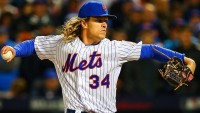
Going into the 2016 season, there is one fear each and every Mets fan has. We dare not speak its name, but that doesn’t change the fact that it’s still present. That fear is that a pitcher will get seriously injured.
Looking at this year’s list of pitchers who could befall the dreaded “Verducci Effect,” Noah Syndergaard headlines that list. If Syndergaard was to suffer a season ending injury requiring Tommy John surgery? it would greatly hinder the Mets chances of winning not only the World Series, but also making it to the postseason. It’s something that not just Mets fans fear, but as Anthony DiComo of MLB.com reports, Syndergaard fears it also:
I’ve thought about it quite a bit. But I trust myself to put my body in the right situations to be able to perform at a healthy level.
The fear is justified. Syndergaard threw 65.2 innings more last year. He throws over 95 MPH more than anyone in the game. He’s working to add the fabled Warthen Slider to his already dominant repertoire. Name a risk factor for UCL years requiring Tommy John surgery. Syndergaard meets most if not all of them.
One risk factor not readily discussed is the team he plays for. Look at the projected Mets rotation when healthy: Matt Harvey, Jacob deGrom, Noah Syndergaard, Steven Matz, and Zack Wheeler. Put aside Syndergaard for a moment. What do the other four have in common? They are all hard throwing pitchers under the age of 30 who have already had Tommy John surgery.
Go outside this group. Since Warthen took over as the Mets pitching coach, the following homegrown Mets have sustained arm injuries: Jon Niese (shoulder), Dillon Gee (shoulder), Jeremy Hefner (two Tommy John surgeries), Rafael Montero (shoulder), Bobby Parnell (Tommy John), Josh Edgin (Tommy John), Jack Leathersich (Tommy John). There are more, but you get the point.
Now, is this an organizational problem since Warthen took over, or is it just bad luck? Could this all have been avoided? Back in the 60’s and 70’s the Mets developed pitchers like Tom Seaver, Jerry Koosman, Nolan Ryan, and Jon Matlack. These pitchers threw more innings than the pitchers today, and yet, Matlack was the only one of this group that suffered an arm injury.
In the 80’s, the Mets had Dwight Gooden, Ron Darling, Sid Fernandez, Rick Aguilera, Randy Myers and David Cone. Of this group, only Doc and Cone had arm issues. It should be noted that Doc had many other issues as well, and Cone’s problem was an aneurysm later in his career.
In the 90’s, Generation K was a bust, and the Mets haven’t developed the caliber of starting pitchers like they have in the past until now. However, this generation seems to befall injuries far more often than their predecessors. Is it organizational? Is it bad luck? Is it preparation? For his part, Harvey wonders what if:
I think now, there are things I could have done better in high school or in college to maybe prevent it. But I don’t know. I’m not saying [Syndergaard] works that much harder than everybody else, because we all work hard. I think as time progresses, guys pay more attention to stretching the shoulder, strengthening the shoulder. If I could go back — I don’t know if this would’ve prevented me from having [surgery], but if I could go back and really do 20 extra minutes of stretching and arm care, you never know what could happen.
That’s the thing. We really don’t know why one guy suffers elbow and shoulder injuries while others don’t. Is it preparation? Is it good genes? Is it just good luck? Much time, energy, and money has been spent on this issue, and yet pitchers still get injured. Pitchers get injured despite teams doing everything in their power to try to prevent it.
It will help Syndergaard being in a clubhouse with players who have had Tommy John surgery. They each will have advice for him on why they suffered the injury and what they could’ve done differently. More importantly, Syndergaard appears to be a hard worker who takes the health of his arm very seriously. There is no doubt he is doing everything he can do to avoid the dreaded Tommy John surgery.
Based on what we’ve seen, if anyone can avoid it, it’s him.
Editor’s Note: this article was first published on metsmerizedonline.com
